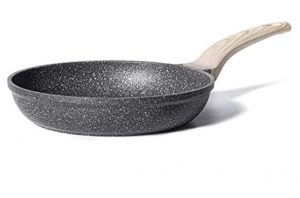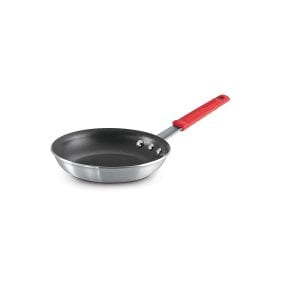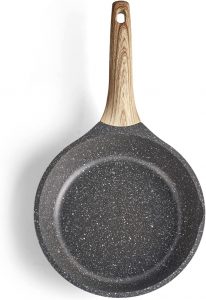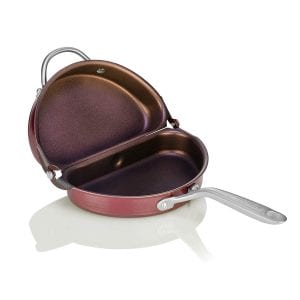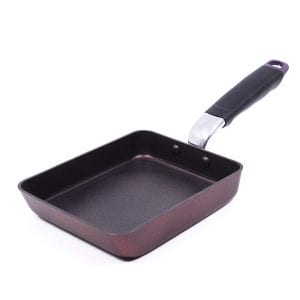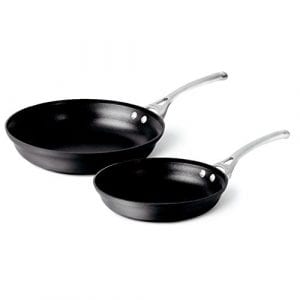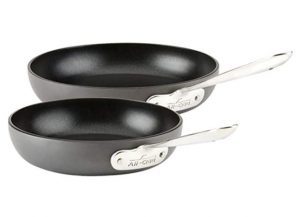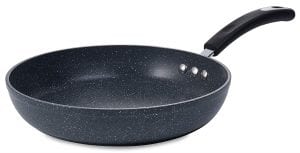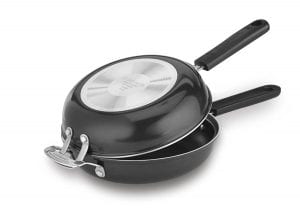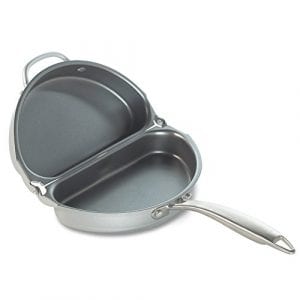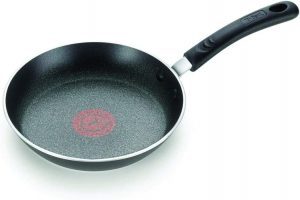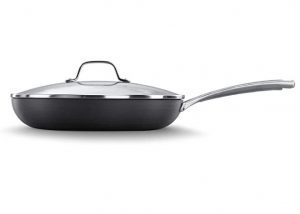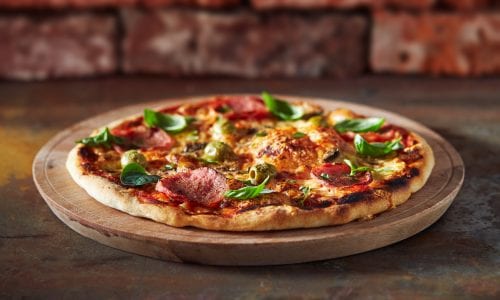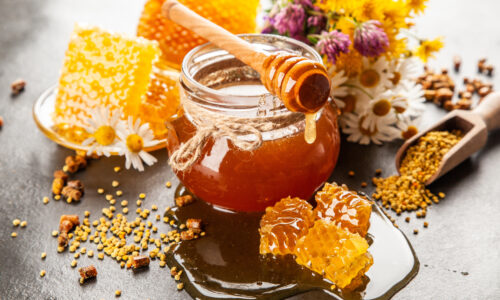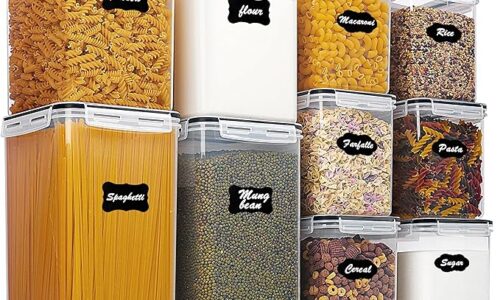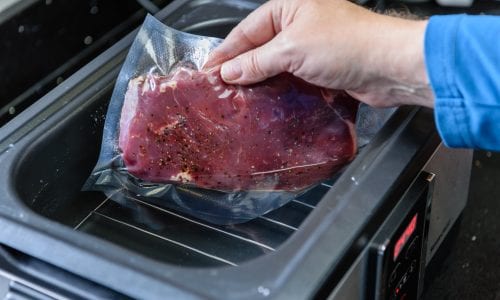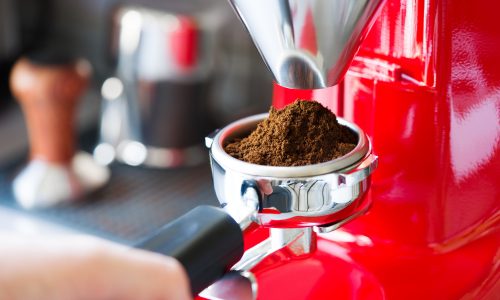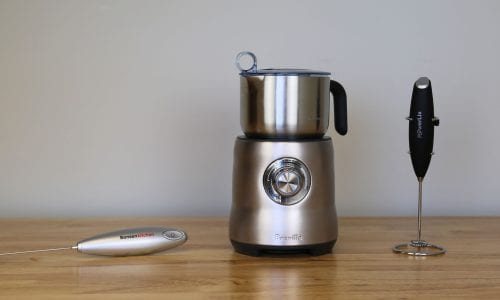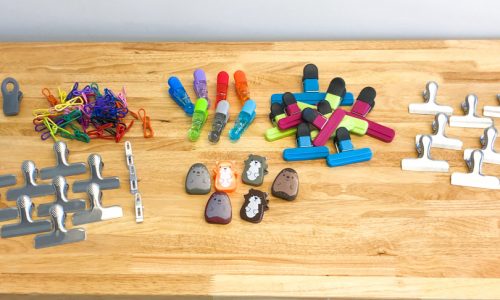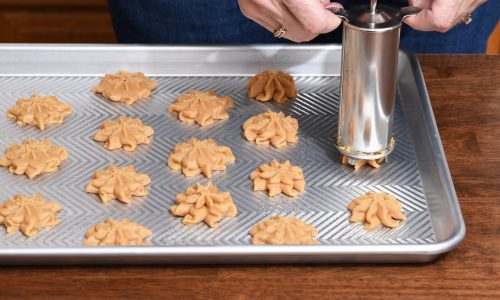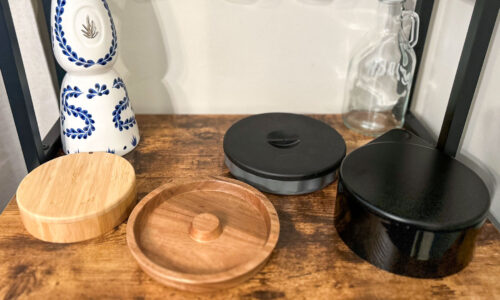The Best Omelette Pan
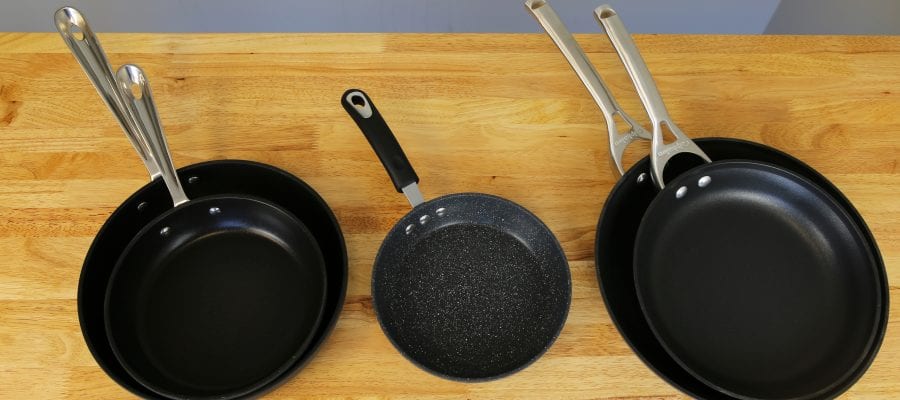
Our Review Process
Don't Waste Your Money is focused on helping you make the best purchasing decision. Our team of experts spends hundreds of hours analyzing, testing, and researching products so you don't have to. Learn more.
Our Picks For The Top Omelette Pans
- 1. Carote Eco-Friendly Aluminum Omelette Pan, 8-Inch
- 2. Norpro Easy Flip Cool Handle Omelette Pan, 9.2-Inch
- 3. Tramontina Nonstick Omelette Pan, 8-Inch
- 4. Caannasweis Scratch-Resistant Stoneware Omelette Pan, 8-Inch
- 5. TECHEF Specialty Stay-Cool Handle Omelette Pan, 9-Inch
- 6. TECHEF Japanese Nonstick Omelette Pan, 7.5-Inch
- 7. Calphalon Aluminum Omelette Pans, 2-Piece
- 8. All-Clad PFOA-Free Omelette Pans, 2-Piece
- 9. Ozeri Stone Earth Non-Toxic Omelette Pan, 8-Inch
- 10. Cuisinart Even Heating Omelette Pan, 10-Inch
- 11. Nordic Ware Compact Omelette Pan, 8.4-Inch
- 12. T-fal Titanium Omelette Pan, 8-Inch
- 13. Calphalon Classic Lidded Omelette Pan, 12-Inch
This non-stick omelette pan is chemical-free and made with a granite-based coating. The Bakelite stays cool while you’re cooking. This pan offers even and quick heating.
Eco-friendly Granite CoatingThis frying pan is made from a granite non-stick material.
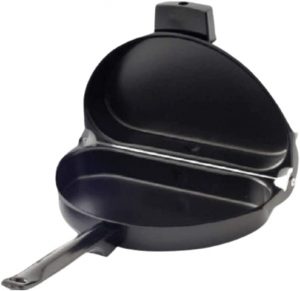
Norpro
Ministry of Warehouse Easy Flip Cool Handle Omelette Pan, 9.2-Inch
This sleek black omelette pan is the perfect tool for creating a healthy breakfast for your family. Simply add eggs and your favorite ingredients and close the lid. Flip the pan half way through and you'll have a delicious omelette in no time at all. There's also the option to leave the pan open and cook eggs in one side and sausage in the other.
Most VersatileThe handle on this omelette pan is designed to stay cool, so you won't need an oven mitt when you use it.
This non-stick omelette pan is made from commercial-grade aluminum. A silicone grip keeps your hands cool as you cook. Consistent heating also creates fluffy eggs for the perfect omelette.
Even HeatingThis omelette pan is a commercial-grade pan with a cool silicone hand grip.
An attractive granite construction makes this omelette pan stand out. It's designed to cook your eggs evenly, whether you're using an electric, gas or induction stovetop. The added scratch-resistant nonstick coating is also a plus, as your omelettes will effortlessly slide off the pan.
Economical OptionYou'll save big with you opt for this economical omelette pan.
Buying Guide
When you’re craving a classic American breakfast, you can’t do much better than an omelet. The mighty omelet is a customizable eggy favorite for any day of the week. But your omelets can wind up limp and deflated without the perfect omelette pan.
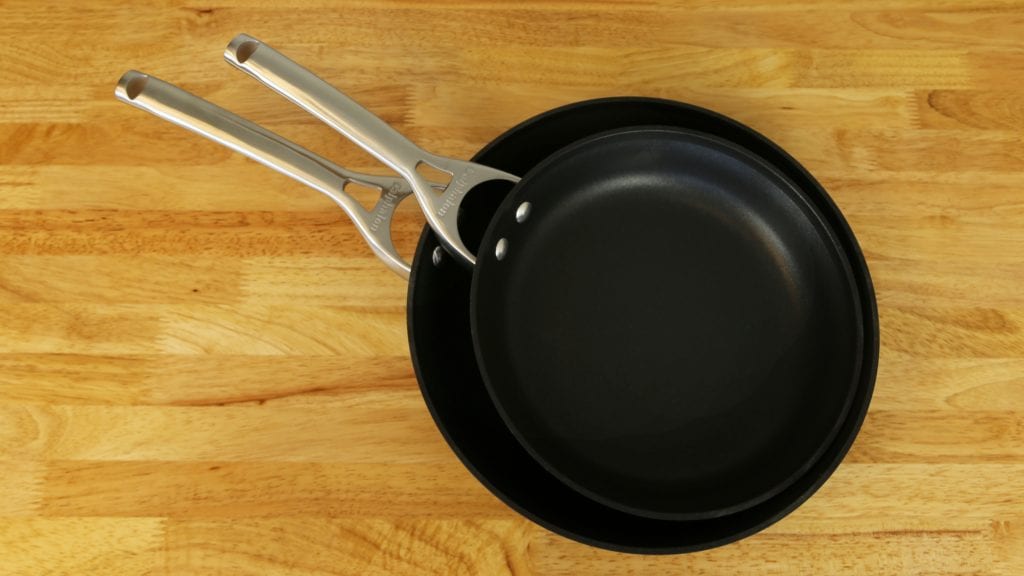
Omelette pans, or sauté pans, are shallow stovetop pans that heat up quickly and evenly. Many home cooks prefer to use non-stick sauté pans. The slick surface makes it easier to flip your omelet, and non-stick pans rinse clean in seconds.
“Non-stick pans are, for my money, one of the most important inventions of the 20th century,” says our resident kitchen expert Julie Chernoff, member of Les Dames d’Escoffier, dining editor of Better magazine and food journalist. “That said, not all non-stick pans are created equal. You’re looking for a well-balanced pan; it should be solid, with a heavy stainless steel or copper base for even heating, but should not be so heavy you can’t pick it up with one hand.”
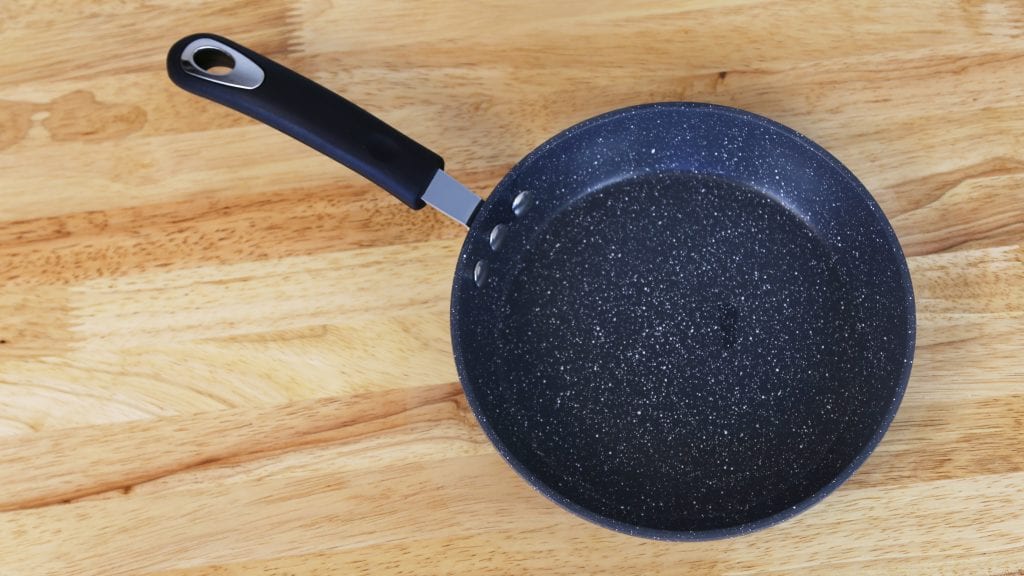
If you’re using a stainless steel pan, you’ll have to add a little oil.
“The sides should be gently sloped, which makes it easier to get a spatula around the sides,” Chernoff advises. “Only wood, plastic or silicone utensils should be used on the surface to avoid scraping or damaging the non-stick surface.”
Cast iron pans aren’t recommended for making omelets; they’re better for slow cooking, braising and stewing hearty foods.
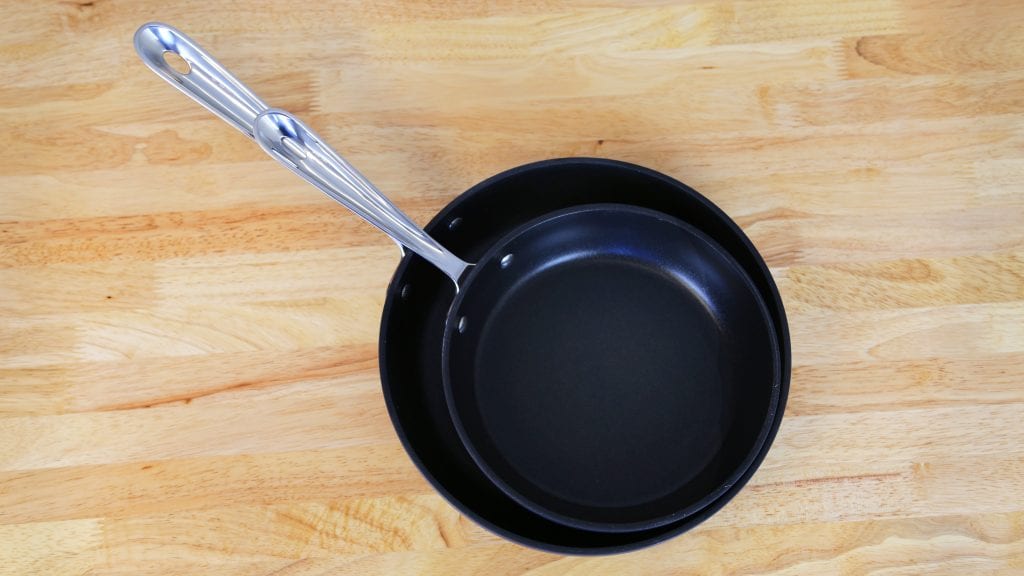
Eco-friendly stone earth pans are another option for cooks who want the benefits of a non-stick pan without the chemicals in the non-stick coating. These pans are covered in a stone-derived coating that resists scratching. The stone earth doesn’t use any controversial chemicals that you might find in other non-stick pans.
The best omelette pans have flat, wide bottoms for conducting heat evenly. Good pans also have long handles that don’t conduct heat to keep your hands and skin safe. Some pans come with silicone handle covers for extra grip and added safety; if you’re looking to make fritattas or other dishes that get finished in the oven, make sure your handle is metal or silicone only.
Heavier pans made from tough metals will last longer. If the surface of your pan is damaged, consider replacing it immediately.
Now that you know your omelette pan basics, check out our Tips & Advice for more tidbits.
Our Expert Consultant

Culinary Expert
Julie Chernoff is a long-time member of Les Dames d’Escoffier (past president of the Chicago Chapter, and current co-chair of the LDEI Legacy Awards Committee), the Association of Food Journalists (AFJ) and the International Association of Culinary Professionals.
Chernoff is the dining editor of Better, a lifestyle website and print magazine. Her journalism started in the test kitchens of Weight Watchers Magazine. She holds a BA in English from Yale University and is a graduate of the California Culinary Academy. She has spent the last few decades styling, photographing, teaching, developing recipes, editing, thinking and writing about food.
What to Look For
- Omelette pans come in an array of sizes. The right size for you will depend on the size of your cooktop, the size of the omelettes you want to make and the amount of storage space you have. Smaller pans are about eight inches in diameter, while larger pans can run up to 14 inches in diameter.
- If you have a dorm-sized oven or limited storage space, you’ll want to go for eight-inch pans. If you have a standard-size oven and a large kitchen, you can buy whatever size you’d like.
- Omelettes don’t need to be finished with a few minutes in the oven, but hundreds of other dishes do. Many non-stick omelette pans are oven-safe up to a certain temperature. Check the instructions on the packaging and your pan’s temperature rating before you toss it in the oven. You’ll also want to make sure that there’s no plastic anywhere in the pan, especially in the handle.
- You can create incredible breakfasts for years if you properly care for and store your omelette pan. In general, stainless steel cookware is dishwasher safe. Aluminum cookware and non-stick pans are not. Hot temperatures from the dishwasher can even cause cracks or chips in a non-stick coating.
- To clean non-stick or aluminum omelette pans, take them off the burner and let them cool down. Once they’ve reached room temperature, you can wipe the pan down with dish liquid and a no-scratch sponge. Let the pan air-dry.
- The way you store non-stick omelette pans affects their longevity. You don’t want to stack other pans or cookware on top of the non-stick pan; this can damage the coating. Storing it on its side or hanging it from a hook will help maintain the non-stick coating.
More to Explore
The eggs in your omelets are the most versatile, affordable and nutritious ingredients in your kitchen. There’s a lot you can learn about your eggs simply by looking at them. If you’re eating a brown egg, the color tells you that it came from a larger, heavier breed of chicken. Does your egg have a very thin shell? That means it was laid by an older hen. Eggs from young hens have thick shells.
If the eggs you bought this week have a darker yellow or orange yolk compared to your last grocery trip, that means they have higher levels of cancer-fighting antioxidants. The shade is determined by your hen’s diet, and hens eating on a free-range eat more nutrient-dense foods.
If you can’t remember how long ago you bought your eggs, dunk one in a glass of water. Older eggs have more air beneath the shell, so they’ll float. Fresh eggs will sink to the bottom.

